Friday Dec 05, 2025
Friday Dec 05, 2025
Thursday, 29 February 2024 00:50 - - {{hitsCtrl.values.hits}}
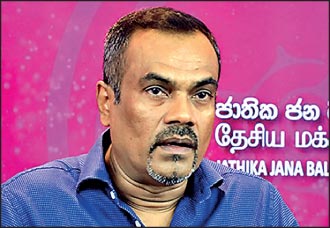
Prof. Anil Jayantha, NPP Economic Council

Prof. Seetha Bandara Ranathunga, NPP Economic Council
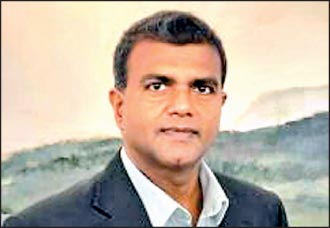
Dr. Harshana Suriyapperuma, NPP Economic Council
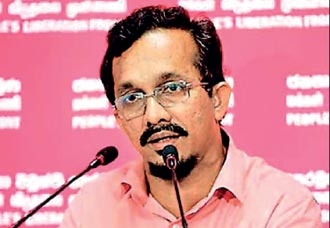
Sunil Handunetti, JVP-NPP
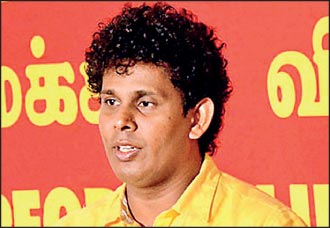
Wasantha Samarasinghe, JVP-NPP

Ideologue of NPP Women’s Revolution
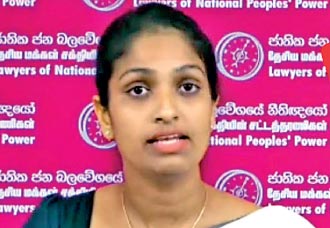
Nilanthi Kottahachchi, lawyer, NPP

Nipuni Sharada Pathirage, NPP
 An October Revolution, peaceful, electoral, is in the air.
An October Revolution, peaceful, electoral, is in the air.
It is a mood and movement of the masses powered by layered generations of the state university educated modern middle-class, led by its organised vanguard intelligentsia (the JVP leadership comprising former university student leaders) and affiliated or networked intelligentsia (the NPP leadership). The JVP is leftist, of a Marxist-Leninist formation; the NPP, left-inclined.
It is a revolution with a vision of modernisation and inclusive, non-discriminatory nation-building. The modernisation is not led by the bourgeois elite but the educated middle-classes. It is not statist, but is not anti-state, coming as it does from the beneficiaries of state education and professionals of the public sector. In terms of ethos, the state university educated generations have residual socialist sympathies.
Middle-class powered modernisation has a more strategic role for the state than does the economic ideology of Wickremesinghe, the UNP and the SJB. The triadic project is rational, internally-driven (not externally imposed or prescribed) reform; export-led industrialisation; and agricultural self-sufficiency/food security.
Social feminism
The women’s mobilisation or more accurately, women’s revolution led by the NPP Women’s (‘Gahanu’) movement, of which Dr. Harini Amarasuriya is the most lucid ideologue and Vrai Cally Balthazar the most effective spokesperson, is the motor force of the coming October Revolution. (https://youtu.be/Z051B6QrMzY?si=0yvJyJCMsUOrGXlY)
Scanning the crowd, Harini queries with delight from the platform as to whether anyone knows of such a political mobilisation of women anywhere-- implying it is a global first. She’s probably correct. The closest parallel as a social movement I can think of is Black Lives Matter and its role in Trump’s defeat and Biden’s victory.
Social feminism (if I may term it that, to distinguish it from socialist feminism) or progressive feminism has been electorally mainstreamed, taken to mass audiences of women in the district capitals and the country as a whole through incandescent public communication by educated young women like lawyer Nilanthi Kottahachchi and dramatist Nipuni Sharada Pathirage, impacting the consciousness of men and the citizenry in general. (https://youtu.be/iL5Rh2BO-V8), (https://youtu.be/nbl0FGQOAmE).
There are more women speakers with postgraduate degrees, PhDs and professorships on the NPP women’s platform than on the platform of any other political party in this country, at this or any previous time.
The NPP-led women’s revolution is the ‘Revolution in the Revolution’ (as Regis Debray’s classic phrase went).
But will there be a rightwing, reactionary, patriarchal backlash, feeding into the ‘we-must-stop-the-JVP-at any-cost’ fascistic impulse that is increasingly discernible?
Red pill
Living standards and all social indicators continue to collapse as never before in my memory. (https://www.sundaytimes.lk/240225/news/millions-chopped-off-national-power-grid-over-unbearable-bills-549847.html) Disagreeing with the NPP’s convenient definition of the crisis as post-Independence, I define the crisis as postwar, centring on the last decade. Both interpretations clearly damn the economic decisions of the UNP, SLFP, SLPP -- and SJB which participated in and explicitly endorses the UNP policies of 2001-2003 and 2015-2019.
At Jaela on Feb 22nd, SJB shadow Finance Minister Dr. Harsha de Silva delivered an hour-long landmark lecture saying “there will be an SJB government soon and when that happens, this is what I shall do”. (https://www.youtube.com/watch?v=dod1LBPEC9c&t=1s)
Following a tub-thumping defence of the recent ‘independence of the Central Bank’ which he should surely test in debate with Prof Howard Nicholas, Harsha showcased as centrepiece of his lecture, his ‘silver bullet’ for a 10% growth-rate: integrate the Sri Lankan economy with South India “in the manner that a bicycle rider grabs the chain of a fast-moving truck ahead of him”.
Economic integration into ‘the five states of South India’ was first articulated by Ranil Wickremesinghe as PM in 2015-2019. Harsha is a policy poodle.
Tamil Nadu fishermen are invading Sri Lankan waters and he want us to integrate economically with South India. Harin Fernando thinks “Sri Lanka is a part of India, actually” while Harsha de Silva wants Sri Lanka’s economy to be a part of South India, actually.
Given extreme asymmetry, Sri Lanka’s economic integration will be subordination. Given geostrategy and demography, the security and sovereignty implications are catastrophic.
What is now indubitably clear to me is that a vote for the SJB will be a vote for quintessential continuity of Ranil’s current economic policies and a return to his policies of 2001-2004 and 2015-2019. It will be a vote for the Ranilist UNP paradigm. It will not be a return to or resumption of the development path of President Premadasa.
In The Matrix, Morpheus offered Neo (Keanu Reeves) a choice of two capsules: the blue pill for continued conformism and the red pill for realisation of reality; realisation resulting in resistance, rebellion and revolution.
We’ve been taking the green pill, the blue pill, and the maroon pill—all variants of the generic ‘blue pill’ of passive continuity. The green-and-yellow (SJB) pill has declared its pharmaceutical contents to be the same as the green pill.
Therefore, it is time to do what Neo did: Choose the red pill.
SJB’s economic ignorance
TV panel discussions have a final round in which each representative of a political party is given two minutes to summarise and pitch to the viewer-voter. The SJB’s participants stay on message, but that message is surreal. Last week I watched Harshana Rajakaruna, an intelligent, personable young parliamentarian. This was his pitch:
 “Our leader Sajith Premadasa is an honest, caring, humanistic, non-violent man. This isn’t a time for experimentation. We have an experienced economic team comprising Dr Harsha de Silva, Eran Wickremaratne and Kabir Hashim. They have a detailed economic agenda.”
“Our leader Sajith Premadasa is an honest, caring, humanistic, non-violent man. This isn’t a time for experimentation. We have an experienced economic team comprising Dr Harsha de Silva, Eran Wickremaratne and Kabir Hashim. They have a detailed economic agenda.”
I’ve heard this from Nalin Bandara, Alawathuwela, Manapperuma, Hector Appuhamy, et al. This “damns with faint praise”, SJB leader and candidate Sajith Premadasa. In 1977 nobody knew that Ronnie De Mel would be JR’s Finance Minister until his Cabinet was sworn in. JR Jayewardene’s televised address during the 1982 presidential election when competing with the SLFP’s Hector Kobbekaduwa demonstrated that it is all about the candidate and what he/she offers the nation. Sajith’s main selling point is his ‘social democratic’ perspective of growth with equity, a breakthrough model which President Premadasa practiced with enormous proven success. No SJBer ever says that.
True, “this isn’t the time for experimentation”. We have already experimented with the SJB’s Economic Team, the results are in. The SJB crew was part of Ranil’s economic team in 2001-2003 and more particularly 2015-2019. The track record of that period includes:
1. The Central Bank Bond scam with its huge losses to the economy.
2. Shutting down the Port City and Chinese projects in 2015, crashing economic growth and wracking-up unpayable bills.
3. Giving the Hambantota Harbour and its environs on a 99-year-lease to China, which is far larger and longer than anything Mahinda Rajapaksa conceded.
4. Scrapping the Foreign Exchange regulatory framework that served us well since 1952 through the high growth periods of JR and Premadasa, and substituting for it a liberalised Act which has permitted an outflow from the country of 50 billion dollars (and counting).
5. Incurring the huge ISB debt.
SJB economists defend the last four colossal misdeeds or blunders.
As a party and aspirant administration, the SJB’s greatest weakness is precisely what it regards as its greatest strength: economics. SJB economics rests on two Big Lies:
 The current contest is one of capitalism against anti-capitalism/socialism.
The current contest is one of capitalism against anti-capitalism/socialism.
 The ‘free market/de-regulation/free trade’ model which the SJB advocates is the only capitalist model.
The ‘free market/de-regulation/free trade’ model which the SJB advocates is the only capitalist model.
The truth is:
 Capitalism is in no danger whatsoever. None in the political arena advocate any kind of socialist or anti-capitalist economy/economics.
Capitalism is in no danger whatsoever. None in the political arena advocate any kind of socialist or anti-capitalist economy/economics.
 Free market/de-regulated capitalism is only one of many forms of capitalism, and not even the most successful or widely prevalent.
Free market/de-regulated capitalism is only one of many forms of capitalism, and not even the most successful or widely prevalent.
 The real choice is about what type/model/form of capitalism Sri Lanka should adopt at this stage of history. The fight is ‘intra-capitalist’; between types of capitalism.
The real choice is about what type/model/form of capitalism Sri Lanka should adopt at this stage of history. The fight is ‘intra-capitalist’; between types of capitalism.
 There IS an alternative.
There IS an alternative.
The SJB is abysmally ignorant of or dishonestly hides the real spectrum of alternatives within capitalism.
 “Continental European welfare states and Asian developmental states, Rhineland capitalism and the state-assisted capitalism of East and Southeast Asia, are varieties of coordinated market economies that are characterized by large government intervention and are relatively egalitarian…”
“Continental European welfare states and Asian developmental states, Rhineland capitalism and the state-assisted capitalism of East and Southeast Asia, are varieties of coordinated market economies that are characterized by large government intervention and are relatively egalitarian…”
 “…In institutional economics, the varieties of capitalism are variously characterized as liberal market economies (US-UK-Australia) and coordinated market economies (most others). Alternative terminologies are competitive managerial capitalism (US), cooperative managerial capitalism (Germany), and bureaucratic capitalism (Japan); stock market capitalism and welfare capitalism, and so on.”
“…In institutional economics, the varieties of capitalism are variously characterized as liberal market economies (US-UK-Australia) and coordinated market economies (most others). Alternative terminologies are competitive managerial capitalism (US), cooperative managerial capitalism (Germany), and bureaucratic capitalism (Japan); stock market capitalism and welfare capitalism, and so on.”
(‘Globalization or Empire?’, Jan Nederveen Pieterse, Routledge, New York, pp. 143-144.)
The SJB Economic Council and its Blueprint’s ‘liberal, free market, deregulated’ economics is the dated US-UK ‘Washington Consensus’ model of neoliberal globalisation.
It is NOT President Premadasa’s model of high growth/ high equity, and even less so his 200 garment factories program of export-oriented provincial industrialisation (with stipulated wages, meals and working conditions). Premadasa’s was an example of Asian ‘state-assisted capitalism’ with a strong component of European ‘welfare capitalism’.
The SJB Economic Council peddles the model of capitalism that led us into debt-dependency, especially private debt-dependency, and the current crisis. “The IMF program will restore our credit-worthiness and we can return to the money markets”. This will keep us in the debt trap forever.
NPP’s team
Anura Dissanayake has announced his model of advisory clusters/policy collectives/policy cells for Ministries. The Minister will be chosen from within the respective cluster. The economic team is apparently Prof. Anil Jayantha, Prof. Seetha Bandara Ranathunga, Dr. Harshana Suriyapperuma, parliamentarian Sunil Handunetti and union leader Wasantha Samarasinghe.
Here’s my take:
A. We need more than a change in /of economic management and implementation, i.e., the SJB formula.
B. We need a change of policy regime, model and direction (within capitalism). The JVP-NPP would provide it.
C. Anura’s team is likely to opt for ‘state-assisted…relatively egalitarian…Asian developmental capitalism.’ (Pieterse, ibid).
D. The JVP-NPP won’t make our economy dependent on/subordinate to South India.
Therefore, following Neo, I choose ‘the red pill’.
Counterrevolutionary countermoves
Where there is revolution—however peaceful—there is the shadow of counterrevolution. A situation pregnant with revolution it is also pregnant with a malevolent twin, counterrevolution.
The JVP has discarded the Marxist-Leninist proposition that as a progressive project draw closer to its goal, the class struggle correspondingly gets sharper. This does not mean that the Left/socialist party in question deliberately accelerates the class struggle. On the contrary, it means that the other side, the class adversary, pulls out all the stops to prevent a progressive outcome.
Given its rhetoric of the impending downfall of a 75-year-old Establishment and its replacement by a “people’s government” for the first time since Independence, as well as its stated determination to end corrupt financial practices and punish the wrongdoers, will the Old Guard make way for the fundamental progressive transformation that the JVP-NPP says is at hand, and amble peacefully off the stage of history with a cheery wave?
Or will the new rightwing political groupings, including faces from the Gotabaya presidency, combine with present or former securocrats to form a counterrevolutionary, proto-fascist consensus?
Some JVP-NPP speakers exude certitude that the presidential election cannot be postponed, still less cancelled, because the Constitution does not permit it. That’s a touching faith not merely in the Constitution but also in the fidelity of bourgeois rulers and ruling elites to the Constitutional order at all times. Such faith is un-dialectical and a-historical, because the bourgeoisie which at an earlier, rising phase of its historical trajectory is the defender of the Constitution and democracy, is known in its phase of crisis and decrepitude to negate Constitutions and democracy itself, opting for armed autocracy instead.
This is especially so when, as in Sri Lanka today, the ruling elite is rapidly transitioning its economic model to a radically different one of extreme privatization and foreignisation, including largescale corporate farming on a small island. This new model of political economy, or more conceptually, the new ‘regime of dependent accumulation’, needs a new political ‘superstructure’. The ruling elite discards the ‘political shell’ of democracy and constitutionalism that served its interests at an earlier stage but has now become an impediment.
This scenario is not inevitable. However, the JVP-NPP should not airily give guarantees that such a thing will not happen or even if attempted, can be easily and instantly overcome.
JVP-NPP’s strategic shortfall
The JVP-NPP must strive for ‘hegemony’, in the sense that the Antonio Gramsci, the greatest political scientist of the Marxist tradition, meant it. He argued that unlike in Tsarist Russia, with its backward state form which enabled the citadel of power to be assaulted frontally, in more developed societies and states (i.e., the West) accustomed to representative democracy, the citadel of power was surrounded by a complex network of trenches, tunnels etc., which are the institutions of civil society.
Therefore, the battle must take place in trenches of civil society before the castle of state power can be stormed. That battle of attrition is to establish hegemony, i.e., the dominance of ideas and perspectives of the left. The left must become the leading force in the intellectual, cultural, and moral-ethical realms, dislodging the dominance of the ruling elite.
The JVP-NPP has not yet established its hegemony in the discussion/debate on economics, which will become the centre of gravity of the public political debate soon enough. It has not yet inflicted a decisive defeat on the ideologically dominant notion of ‘There Is No Alternative’ (TINA) to the neoliberal Ranil-IMF package.
The problem of ‘hegemony’ is inextricably intertwined with the problem of ‘unity’. Ideological hegemony requires an intellectual counter-elite; an accumulation of intellectuals of Gramsci’s two varieties, ‘traditional’ and ‘organic’.
The JVP-NPP has/is this, but allies, partners, would rapidly expand the pool of expertise and thereby accelerate the achievement of intellectual hegemony which can only be won in what Jose Marti and Fidel Castro called ‘the battle of ideas’.
Anura Dissanayaka’s and the JVP-NPP’s most impressive achievement so far has been the process of forging what Gramsci called ‘the people-nation’; a fusion of the people’s grievances, aspirations and emotions with the tasks of the national unification and independence, the need for a national renaissance.
In so doing, and in order to do this, Anura and the JVP have also laid the foundation for what Gramsci designated a ‘national-popular bloc’, a bloc of the socioeconomic and national issues and forces. The NPP is in the process of becoming that ‘national-popular bloc’ and agency of the ‘people-nation’.
Fidel insisted that “unity doesn’t merely add, it multiplies”. The mother continent of Left Populism is Latin America. There, the left-populist project has never felt itself to be contradicted by coalition-building, but rather, consummated by it. In his famous comeback victory against Bolsonaro, Lula led a coalition of ten parties and organisations of various sizes clustered around his Workers’ Party.
‘Uneven development’ teaches that neither society nor politics polarises into two camps. ‘Absolutely everything develops unevenly’ (Mao). That includes public consciousness. Intermediate opinion-bearing strata and shifting intermediate zones exist. They can tip the balance between outcomes: people’s victory or proto-fascist counterrevolution. These intermediate strata and spaces have to be persuaded, won over, liberated or neutralized. It takes a Frente Amplio (Broad Front).